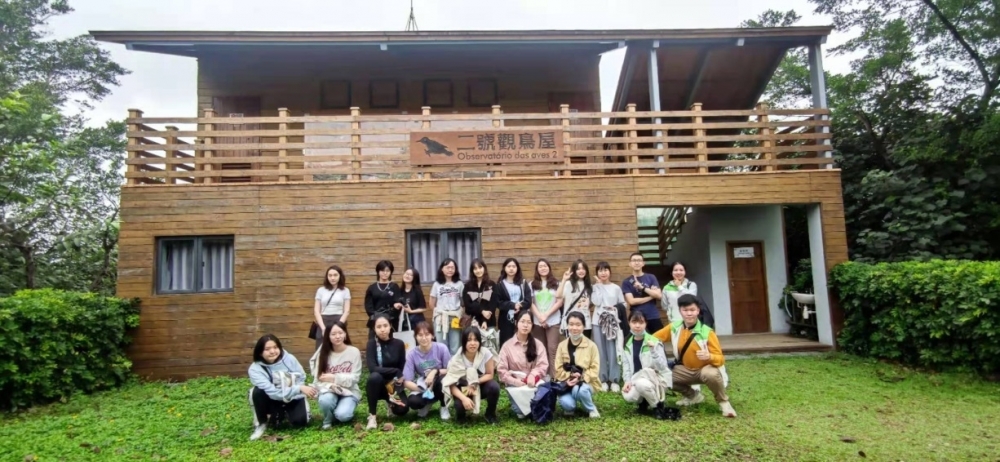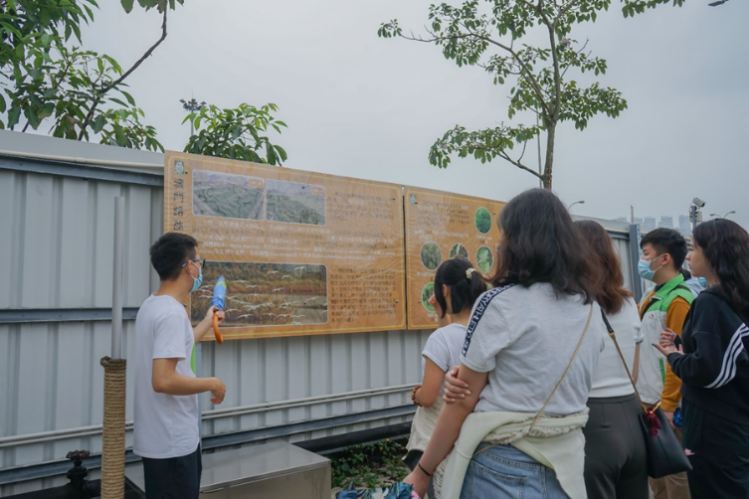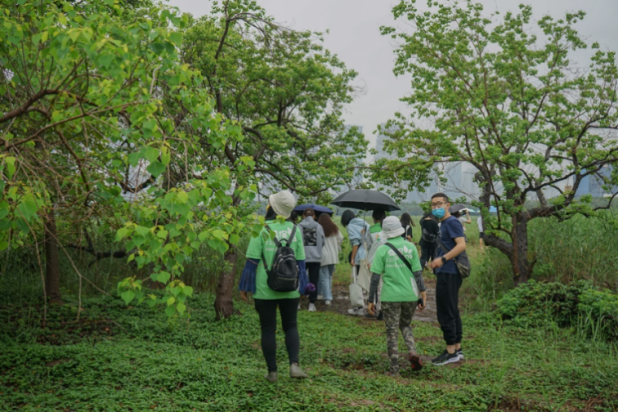The “Ecological Guided Tour of Mangrove” was held in Taipa Wetland in Avenida da Praia on 18th April by Social Service Team of MUST, which was managed by the Student Affairs Office of MUST. This activity was designed for enhancing students’ environmental awareness as well as exploring the life myth hiding in nature. More than 20 students participated in it.
The whole process was divided into 3 parts. Firstly, the docent introduced the wetland flora and fauna to the students. Secondly, the participants walked and experienced the Mangrove wetland with the guidance of the docent. The final stage located in birdwatching room, in which participants used binoculars to watch birds. During the activity, participants listened attentively to the docent’s explanation, shuttled through the mangrove wetland, and photographed the specimen of birds. Almost all the participants indulged in this excursion. The ecological tour was advantaged for offering the wonderful and magnificent nature to students. Through this activity, the students not only acquire the knowledge related to environment protection, but also they strengthen the environmental awareness.

When the tour came to an end, the participants expressed that through the ecological trip, they were exposed to a completely different world — the unseen depths of the jungle, the wetland filled with fairy-like birds, the wild mimosa trimmed with flowers......Every single one of things amazed them with the wonder of nature. “It was the first time that I saw a Black-faced Spoonbill Platalea minor hovering in the sky closely through the telescope,” said Xiao Changyao, one of the members of the Social Service Team, also as one of the organizers. “It’s a pity that I had never noticed that such a cute, rare animal was living right next to us. This was an interesting and meaningful activity that broadened our mind. The harmonious coexistence between man and nature will always be the topic that is certainly worth our attention.”
Mangroves are defined as assemblages of salt tolerant trees and shrubs that grow in the intertidal regions of the tropical and subtropical coastlines. They are laurifruticeta which are mainly located in estuary of tropics between the latitude lines of the Tropic of Cancer and the Tropic of Capricorn or the junction of freshwater and brackish marsh. They only have a narrow distribution in Macao which are restricted by urban development and land planning. Mangroves are halophyte which bears different physiological structure. Such a special structure indicates that mangroves are important primary producers in marine environment. They contribute to maintaining ecological balance and purifying air and salty seawater.
behind the scenes:






